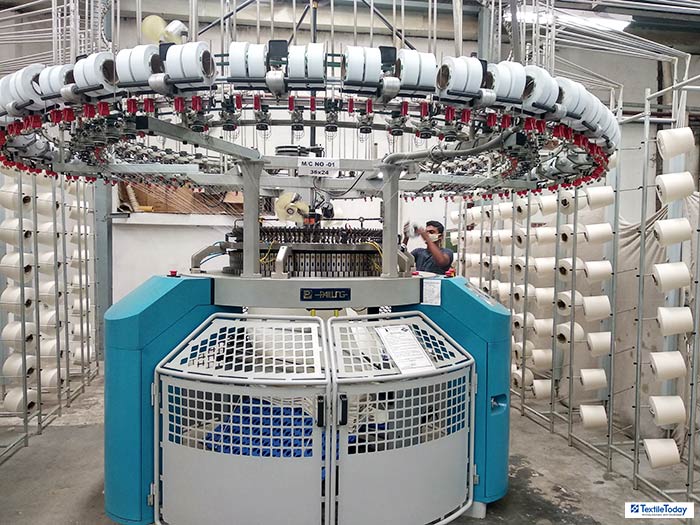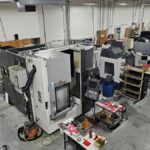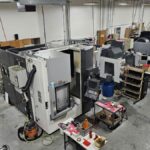Knitting machines are transforming the world of crafting, offering a blend of tradition and technology that captivates both seasoned knitters and newcomers alike. Imagine being able to create intricate patterns and stylish garments in a fraction of the time it takes with manual knitting. These innovative tools not only save time but also unleash creativity, allowing you to explore new designs effortlessly.
Whether you’re looking to enhance your hobby or start a small business, investing in a knitting machine could be your key to unlocking endless possibilities. As we delve deeper into the benefits, types, and features of various knitting machines, you’ll soon see why this investment is worth considering for anyone passionate about textiles. Get ready to discover how these smart devices can elevate your crafting game!
Benefits of Using a Knitting Machine
Knitting machines offer a plethora of advantages for both novice and experienced crafters. They significantly reduce the time it takes to create knitted items, allowing you to produce more in less time. This efficiency can be especially beneficial if you’re working on gifts or selling your creations.
Precision is another key benefit. Knitting machines ensure consistent tension and stitch quality, which can be challenging to achieve by hand. You’ll notice a professional finish that elevates your projects.
Additionally, these machines provide versatility. With different settings and attachments available, you can knit various patterns and textures easily.
For those who may struggle with manual knitting due to physical limitations, a machine opens up new possibilities for creativity without discomfort. It’s an investment in both craftsmanship and accessibility.
Knitting machines empower users by merging technology with traditional crafting techniques.
Types of Knitting Machines and Their Features
Knitting machines come in various types, each catering to different needs and skill levels. Manual knitting machines require a hands-on approach, allowing you to control the tension and speed. They are perfect for those who enjoy traditional methods but want an extra boost in productivity.
On the other hand, electronic knitting machines offer advanced features. With built-in patterns and programmable settings, they make intricate designs easier to achieve. These are great for knitters looking to explore complex projects without extensive manual effort.
Additionally, there are circular knitting machines designed specifically for creating seamless tubes or garments like hats and socks. These versatile tools can save time while delivering professional results.
Gauge-specific machines cater to varying yarn thicknesses, ensuring that your projects turn out just right every time. Choosing the right type is essential for maximizing your creativity and efficiency in knitting.
Factors to Consider When Choosing a Knitting Machine
When selecting a knitting machine, consider your skill level first. Beginners might prefer user-friendly models with basic functions. More experienced knitters could benefit from machines that offer advanced features.
Next, think about the type of projects you’ll tackle. A flatbed machine is ideal for making sweaters or blankets, while a circular knitting machine works well for hats and socks.
Portability matters too. If you plan to take your machine to classes or craft fairs, look for lightweight options that are easy to transport.
Don’t forget about the price point. There’s a wide range available—set a budget that suits your financial comfort without compromising on quality.
Read reviews and ask fellow crafters for recommendations. Real experiences can guide you toward the best choice tailored to your needs and preferences.
How to Use a Knitting Machine: Step-by-Step Guide
Using a knitting machine can be an exciting journey. Begin by setting up your machine on a stable surface. Ensure it’s plugged in and ready for action.
Next, choose the yarn that suits your project best. Load it onto the yarn holder, making sure it feeds smoothly through the tension control.
Now, thread the yarn through all necessary guides and into the needles according to your machine’s manual. This step is crucial for achieving even stitches.
Once threaded, select your desired stitch pattern using the controls or dials provided. Test a few rows with scrap yarn before committing to your main project.
When you’re satisfied with how it looks, start knitting! Keep an eye on tension and fabric formation as you go along; adjustments may be needed for optimal results. Enjoy watching your creation take shape row by row!
Tips for Maintaining and Caring for Your Knitting Machine
Taking care of your knitting machine is essential for its longevity and performance. Regular cleaning should be a priority. Dust and lint can accumulate, so use a soft brush or cloth to gently wipe down all surfaces.
Lubrication is another key aspect. Consult your manual for recommended lubricants and apply them to the moving parts as needed. This helps keep everything running smoothly.
Check the tension settings often. Proper tension ensures even stitches and reduces wear on the machine components.
Store your knitting machine in a dry, cool place when not in use. Avoid humidity, which can cause rust or damage electronic parts.
Always follow the manufacturer’s guidelines for maintenance schedules and repairs. Keeping up with these practices will enhance your crafting experience while extending the life of your beloved knitting companion.
Conclusion
When considering whether to invest in a knitting machine, think about your personal crafting goals and lifestyle. If you enjoy creating knitted items but find traditional methods time-consuming, a knitting machine could be the solution you need. It offers speed and efficiency while allowing for creativity.
Evaluate your budget against the features of different machines. Determine how frequently you plan to use it and what types of projects you’ll undertake. Remember that a higher price doesn’t always mean better quality; research is essential.
Consider your skill level as well. Some machines cater more towards beginners, while others are designed for advanced users. This can influence both ease of use and learning curve.
Investing in a knitting machine can enhance your crafting experience by opening up new possibilities for creativity. Whether you’re looking to produce garments quickly or explore intricate patterns with less effort, this tool could be an invaluable addition to your toolkit. Think carefully about what aligns best with your passion for knitting before making the leap into purchasing one.





